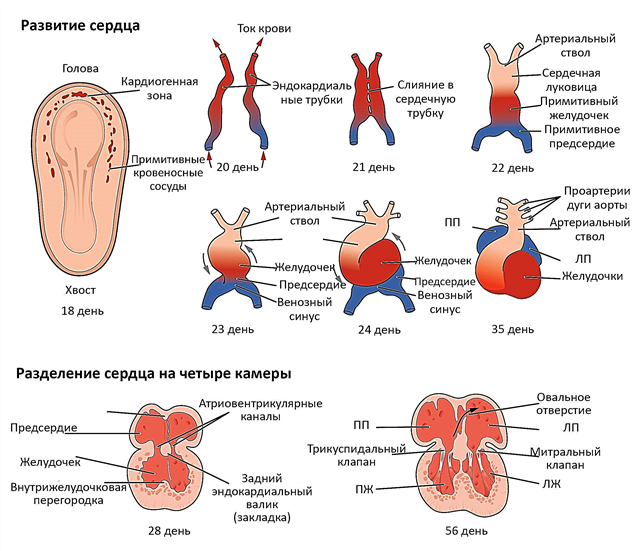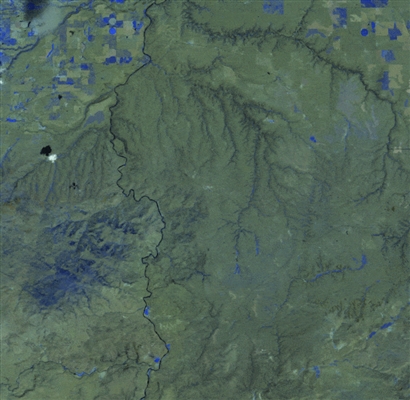A red throat and fever in a child is one of the most common complaints of parents when contacting a pediatrician. Indeed, children under 12 years old very often get sick with pharyngitis and tonsillitis. It is not surprising, because the tissues of the throat are in daily contact with thousands of microorganisms, to some of which the child does not yet have immunity.
Over time, the child's immune system "becomes familiar" with respiratory infections and becomes able to resist them.

Adults can also have a sore throat, but their illness is much easier, in most cases - without fever and complications.
Throat diseases are especially common in the cold season and off-season. A sore throat in a child may appear after active games on the street, walking in light clothes in damp weather, drinking cold drinks.
Hypothermia is a factor that significantly increases the risk of developing acute respiratory infections. When inhaling cold air / eating cold food, the nasopharynx and tonsils, as well as the larynx, are especially affected.
Red throat - a symptom of acute respiratory infections
High fever and red throat are typical symptoms of acute respiratory infections (i.e., acute respiratory infections). In particular, this clinical picture is typical for some ARVI (acute respiratory viral infections).
We list the common acute respiratory infections, in which there is a reddening of the throat and an increase in temperature:
- Acute pharyngitis is an inflammation of the pharyngeal mucosa. With pharyngitis, the child's throat is reddened, the body temperature is elevated or high. Children often complain of discomfort when swallowing, poor appetite.
Acute viral pharyngitis in most cases is the cause of redness of the throat in children.
With pharyngitis, redness is especially noticeable on the visible part of the pharynx, behind the tonsils. The mucous membrane of the pharynx may look loose, bumpy; often it is covered with a mucopurulent bloom.
- Acute tonsillitis, i.e. sore throat - inflammation of the tonsils (tonsils). Redness and swelling of the tonsils indicate the development of a catarrhal form of sore throat. With catarrhal tonsillitis, the tonsils are covered with a transparent coating, while with purulent tonsillitis, the coating is white, with a greenish-yellow tinge. Inflammation of the tonsils is always accompanied by severe sore throat and fever (in children, the temperature is 38-41C). A child with a sore throat is reddened, restless, eats poorly.
- Localized form of diphtheria. Acute infectious disease. From the first day of illness, there is a fever, severe weakness, symptoms of inflammation of the tonsils. Despite the fact that the child has a high fever, his skin turns pale (for comparison, with angina, the skin has an unhealthy bright blush).
With the catarrhal form of diphtheria infection, the characteristic membranous plaque in the throat is absent. The tonsils and pharynx are swollen, reddened, and have a bluish tinge.
Drooling, nasal voice, shortness of breath, fever up to 40 C are symptoms of the toxic course of diphtheria. You need to call an ambulance. Diphtheria is treated with antitoxic serum. It is useless to treat it with local remedies or antibiotics.
- Infectious mononucleosis. Often, the symptoms of infectious mononucleosis are mistaken for another disease, such as tonsillitis.
Despite the fact that many have never heard of infectious mononucleosis, the disease is extremely common. About 50% of children under the age of five are familiar with the disease.
Symptoms of infectious mononucleosis are high body temperature, swelling and redness of the tonsils, swollen lymph nodes in the neck and throughout the body, general weakness. The child has a sore throat, but less intense than with acute tonsillitis. Infectious mononucleosis has a favorable prognosis. In rare cases, the disease gives complications to the liver, spleen, middle ear and other organs.
As you can see, there are many causes of throat congestion and fever. At the same time, the treatment of the listed throat diseases is significantly different: for example, ARVI is treated with antivirals, streptococcal sore throat - with antibiotics, diphtheria - with antitoxic serum, and with mononucleosis, all of the above drugs are ineffective. That is why a pediatrician should examine the child for any alarming symptoms.
Treatment - general and local
How to treat a red throat? It all depends on the causes of the disease. Since the red throat in most cases turns out to be the herald of ARVI, its treatment begins with local therapy, which includes gargling, irrigation of the throat, and resorption of lozenges and tablets. The listed procedures allow:
- reduce painful sensations when swallowing, talking, etc.;
- relieve swelling and reduce redness;
- get rid of perspiration;
- prevent the growth of bacteria in the mucous plaque on the pharynx and tonsils;
- reduce the risk of complications - otitis media, sinusitis, tracheitis, purulent infections.
Thus, local procedures are an indispensable part of the treatment of acute respiratory infections. Let's talk more about topical throat treatments.
Gargling is a very simple and affordable, but no less effective method of treating throat infections.
For rinsing, you can use warm salted water, a solution of soda (a teaspoon per glass of water), water with the addition of a few drops of propolis or chlorophyllipt tincture (not recommended for children prone to allergies). The procedure can be carried out 4-6 times a day, always after each meal and before bedtime.
After rinsing, the child's throat can be treated with an antiseptic spray (Orasept, Hexoral, Ingalipt). Always read the instructions for the drug - many of them have age restrictions or differences in the frequency of use for children of different ages. After irrigating the throat with the spray, you should not drink and eat for 20-40 minutes.
 Sucking lozenges is a favorite medicine for many children. Most throat lozenges have a pleasant taste (for example, Grammidin, Strepsils, Doctor Mom, etc.). However, parents often do not take such treatment seriously, and in vain. First, resorption stimulates the production of saliva, which contains natural antiseptic substances, primarily lysozyme. Secondly, lollipops contain antiseptic substances that inhibit the vital activity of microorganisms. Some lozenges contain components that activate the immune system (for example, Tonsilotren, Imudon).
Sucking lozenges is a favorite medicine for many children. Most throat lozenges have a pleasant taste (for example, Grammidin, Strepsils, Doctor Mom, etc.). However, parents often do not take such treatment seriously, and in vain. First, resorption stimulates the production of saliva, which contains natural antiseptic substances, primarily lysozyme. Secondly, lollipops contain antiseptic substances that inhibit the vital activity of microorganisms. Some lozenges contain components that activate the immune system (for example, Tonsilotren, Imudon).
If local treatment does not work, systemic drugs will be required. Their choice depends on the causes of the disease. To make an accurate diagnosis and prescribe an effective treatment, laboratory tests may be required - a complete blood count and bacteriological culture of the pharyngeal microflora.
Antipyretics - how and when to use them
When a child's body temperature is high and the throat is red, most parents immediately give the patient antipyretic drugs. Often, at the same time, the indicators of the thermometer barely reach 37.5C. This approach is absolutely wrong, and can even harm.
It is important to understand that bringing down the temperature and eradicating the infection are not the same thing. In order for the temperature to return to normal, it is necessary to destroy the infection. Antipyretics do not affect the cause of the disease, but they are able to temporarily relieve fever, which in some cases can save the child's life. At the same time, taking antipyretics, like any other medications, should only be taken if necessary.
It is not recommended to bring down the temperature below 38C. Such indicators do not harm the child, but, on the contrary, help him fight the infection.
It is known that when the temperature approaches 37.5 C, blood circulation in the body is accelerated, the division of leukocytes is activated, the production of interferon and other immune substances is activated. Artificial knocking down of the temperature blocks these natural defense mechanisms, does not allow the formation of immunity.
However, a very high temperature is dangerous to health, especially when it comes to a small child. Parents need to control the body temperature of a sick child, measuring it every 3-4 hours. You must be ready for the use of antipyretics. You should choose and purchase an antipyretic drug for children in advance.
 The modern pharmaceutical industry offers a wide range of antipyretics for children. Many of them are available in a convenient form - in the form of syrups, suspensions, rectal suppositories. Each form has its own advantages. Thus, syrups and suspensions are easy to use and usually taste good. The indisputable advantage of rectal suppositories is quick action. Suppositories are also recommended for infants.
The modern pharmaceutical industry offers a wide range of antipyretics for children. Many of them are available in a convenient form - in the form of syrups, suspensions, rectal suppositories. Each form has its own advantages. Thus, syrups and suspensions are easy to use and usually taste good. The indisputable advantage of rectal suppositories is quick action. Suppositories are also recommended for infants.
The safest antipyretic agent for children is paracetamol. This substance is non-toxic (when consumed at normal dosage) and is safe even for babies. In addition to the antipyretic effect, paracetamol has an analgesic and mild anti-inflammatory effect. Paracetamol is a very common medicine. It is an active component of such drugs as "Efferalgan Children's", "Panadol Baby", "Prohodol", "Acetalgin", "Vinadol" and many others.
If the child's temperature is not knocked down by paracetamol, call a doctor. Do not use stronger antipyretics on your own.
A temperature of 39 and a red throat in a child often accompanies a sore throat, the treatment of which is not complete without antibiotics. Within 1-2 days, they normalize body temperature, affecting the cause of the disease - the focus of infection.
If antibiotics are taken in parallel with antibiotics, it seems that the patient's condition is improving, which is not always true. In this case, it is impossible to track how effectively the selected antibiotic fights the infection. That is why, when using antibiotics, the intake of antipyretics should be limited.
They resort to taking antipyretics against the background of antibiotic therapy if the temperature reaches 39C.
Can a throat be healed at home?
Children and their parents are rarely in a hurry to go to the hospital, even with severe symptoms of acute respiratory infections, preferring to be ill at home. There are many reasons for this - some are afraid of contracting other infections from roommates, others believe that the home environment is more conducive to recovery. In addition, many are sure that it is possible to cure a sick child on their own without contacting a specialist. But is this always the case?
Colds associated with SARS are usually relatively easy and can indeed be successfully treated at home. At the same time, home treatment involves following the doctor's recommendations and adhering to bed rest. Drinking plenty of fluids, frequent rinsing, antiseptic throat treatment are required.
If the patient has a sore throat, local treatment is not enough. A course of antibiotic effective against streptococcus is required.
A sore throat in a child can also be cured at home. However, in this case, the parents should make sure that he takes the antibiotic on time. It is necessary to constantly monitor the patient - to control body temperature, monitor nutrition, health.
On the second or third day of taking the antibiotic, the child's well-being improves significantly. This indicates the effectiveness of the selected drug, but not that the child is cured. To destroy the infection and completely cure the child, a full course of antibiotic therapy is required (7-10 days, depending on the drug chosen).


